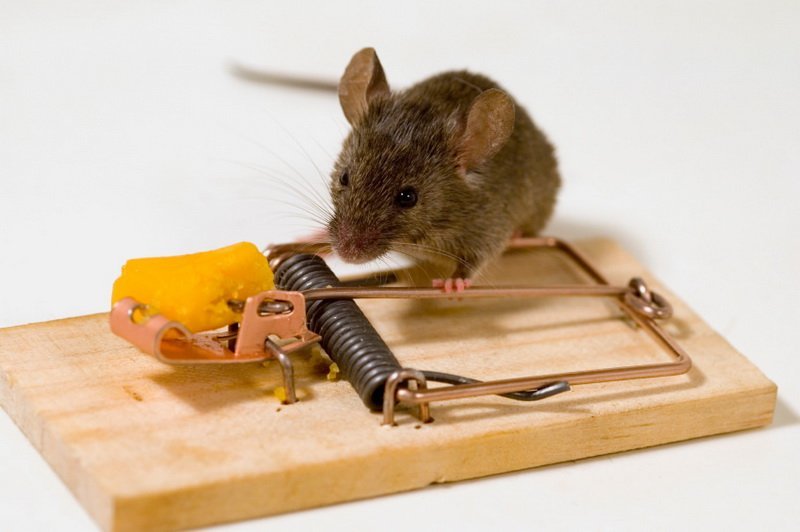
Contents
The mousetrap is the main means of rodent control. To quickly get rid of rats, you need to choose the right type and location of the device, and know-how to install a mousetrap. Platform, spring mechanism, and bait-this is the standard device of a mousetrap.
How the mousetrap works
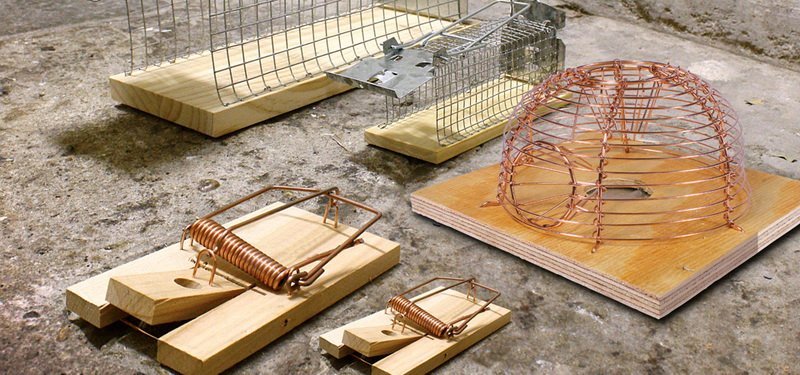
Rat traps – a device necessary for catching and exterminating rodents. There are species that kill animals and those that are designed to capture them. To get a mouse into a trap, you need bait. Any product with a bright smell will do cheese, chocolate, sweets, cottage cheese, sausage, peanut butter.
Smelling the smell, the rat tries to take a piece. The mechanism starts with the following principle of operation:
- The retainer slides off.
- The release of the clamp.
- Slamming the mousetrap.
The device is triggered in a matter of seconds, so the rodent does not manage to escape.
There are traps that leave the rodent alive. The mouse, entering the cage, touches the lever that holds the door open. The door slams shut behind her, cutting off her escape. Then the rat can be released into the wild away from home.
Instructions for self-installation

To make sure that the rat is trapped, the mousetrap is installed in places where animals live most often.
The mechanism should be set up correctly. This stage is especially important for traditional spring-loaded mousetraps.
Site selection
It is advisable to install the device in places where rodent colonies accumulate.
To determine the location of their home use the following landmarks:
- traces on the floor of the apartment that remain from the rubbing hair of the pest;
- footprints on the floor;
- the feces of the animal;
- squeaking or rubbing paws (to hear, create absolute silence).
Attention! If you see one dead rat, be prepared to find their colony around.
Carefully inspect the floor and walls for cracks and holes. Rodents can hide in them.
Favorite localities of rats and mice:
- under the Cabinet;
- for furniture;
- in the upper part of the basement;
- between Desk drawers or boxes.
If you find a pest habitat, set a mousetrap as close to it as possible.
Installation of the gatehouse

The main stage is to properly adjust the mechanism of the trap and charge it without damaging your own fingers.
Make a thread feeder (can be supplied ready-made), fix it in the spring, press the latter to the body and charge the bait – this is how to properly install a “classic” mousetrap.
For the self-production of a thread feeder, take a wire of the type of guitar or balalaika string with a length of 20 to 25 cm. Bend it in half.
Step-by-step instructions for installing the gatehouse:
- Turn the trap holes to yourself.
- Thread the line from top to bottom, from right to left.
- When the thread feeder has entered the body of the rat trap, insert the thread there.
- Pull the line-up.
- Thread the wire in the opposite direction (from bottom to top, from the left hole to the right).
- Throw the thread over the spring.
- Insert it into the thread feeder and pull it down.
- Turn the rat trap with the lower part towards you.
- Assemble the spring to the device and tighten the thread.
After you have started the mechanism, you should fill the rodent bait.
Location
In homes where children and pets live, you should avoid open-type mousetraps. Traps with a loop mechanism are also not suitable. Select “humane” traps by cell types that do not kill the animal.
Place the device in the area between the rodent’s nest and the food.
It is advisable to choose a territory that is protected from moisture. This will prevent damage to the mechanism and bait.
Traps are also set in non-residential areas: in the basement, shed, garage, bushes.
Utilization
When the device is no longer needed, it is disposed of as household garbage. The rat trap can be thrown out to the General dump, burned.
Features of installing different types of mousetraps
How the device is installed depends on its type.
The main types of mousetraps:
- spring;
- trap;
- electronic;
- “humane” that doesn’t kill;
- glue.
It will not be difficult to make a mousetrap at home.
Spring
The base of frame spring mousetraps is wooden or metal. A frame is attached to the top and spring is inserted into it. It is fixed by a rod, at the end of which there is a hook. They put bits of food on it as bait.
When the rodent takes the bait, the frame is released and swats the animal. The mousetrap can be used repeatedly. Every time you need to install it on the new one.
Here’s how to put a spring-type rat trap:
- Put the food on the hook.
- Pull the metal frame back until it stops.
- Without ceasing to hold the frame, turn the rod with one hand and attach it to the hook.
- Lower the frame.
For the device to work well, the hook must be located at the tip of the rod. For a spring mousetrap, a solid bait is suitable. The rat must twist a little on the hook to start the mechanism.
Traps
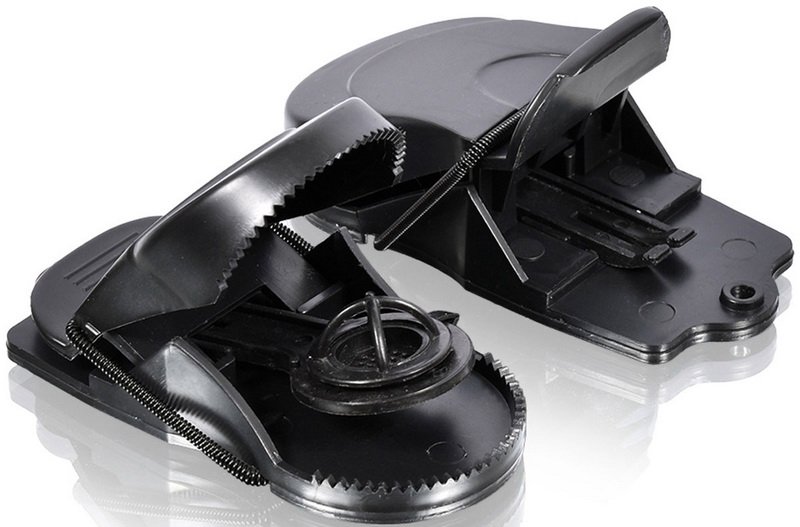
Traps, or clothespin mousetraps, are similar to devices for catching bears. They are distinguished by their smaller size and horizontal location. The rat trap is made of plastic, has semicircular edges with teeth at the end.
There are devices of this type for mice and rats. The latter has a larger size.
Electronic models
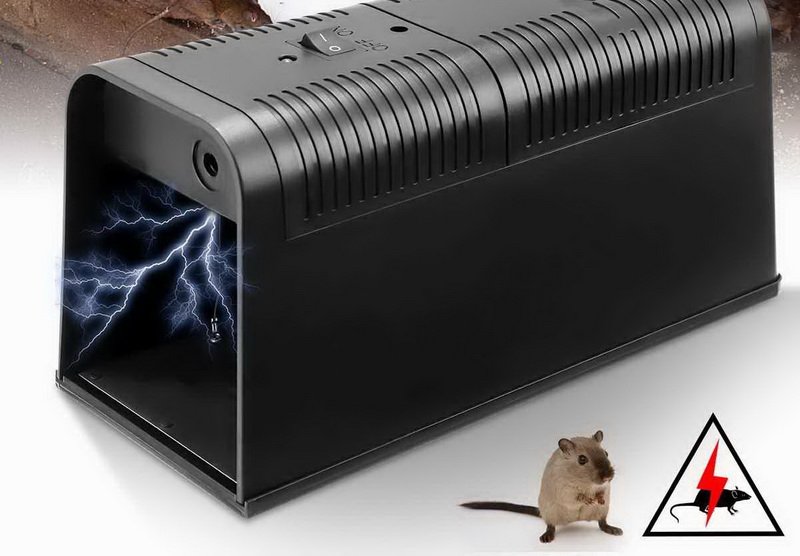
Modern electric mousetraps are the most convenient means of rodent control. All that is required of a person is to put the bait and plug the cord into the socket. A second after getting inside, the rat dies from an electric current. If mechanical models may not work, electronic rat traps are always effective.
Outside of the case, there are LEDs that are configured for movement. They light up when a rat gets inside.
Traps that don’t kill
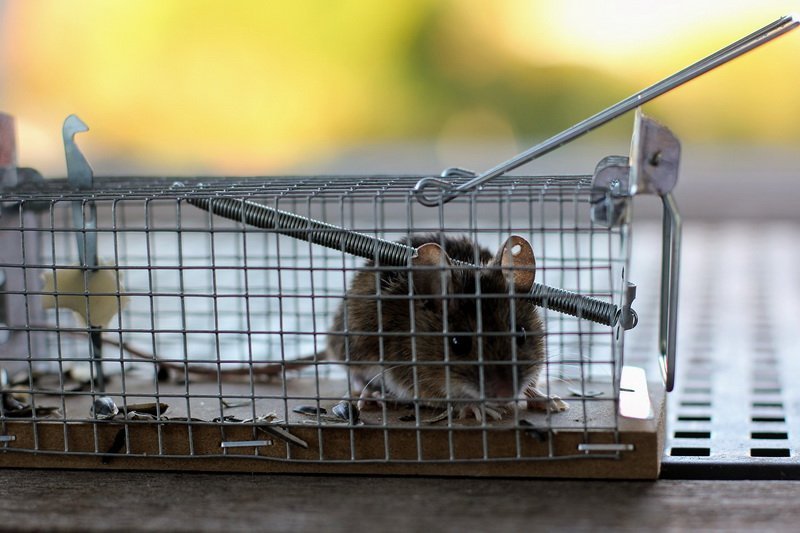
If you are not satisfied with mouse traps that kill rodents, choose a more “humane” option:
- cells;
- swing;
- pins.
The cage looks like a mesh box with a metal door fixed by a spring. Inside is a hook. One end with bait, the other fixes the door. How it works: as soon as the mouse grabs the bait, the door slams shut.
A swing-type rat trap is a long tube curved in the center. There is a door at one end of the device. The pipe is installed so that the part from the door fits snugly to the floor. The principle of operation is invented as follows: the rodent runs into the pipe, outweighs it. The door, which was previously open, slams shut.
There are mousetraps-clothespins that do not kill animals. They are more oblong than classic traps. The bait is placed deep into the device. The flap catches the mouse when it is completely inside. Herefore, the rodent does not get damaged.
Glue
The device has a simple design. It is a single Board covered with glue that is resistant to moisture and sunlight. In the middle of the Board set the bait. The rodent runs up to the bait and sticks firmly.
Glue is not poisonous and does not kill rodents. Therefore, after catching the pest, you should decide how to get rid of it. You will either have to kill or pull away from the trap, which is not easy. This is the main drawback of glue mousetraps.
Glue traps are designed for mice. They are not to be relied on when catching a large rat.
Homemade
Making a trap at home is not difficult. You will come to the aid of a bucket, straw, bait, and a plank or ladder for the rodent.
Stages of creating a homemade mousetrap:
Fill a container (bucket or large bottle) with water.
Throw straw on top.
Pour a little vegetable oil for the smell.
Put the bait down. It should be light, so as not to fall under the water. Grains or seeds will do.
Lean a rodent ladder next to it.
To destroy rats in the basement, use an iron barrel. Throw in a bright-smelling bait. The rat will smell the smell, run into the barrel, but will not be able to get out because of the concave edges of the container.
Precautionary measures
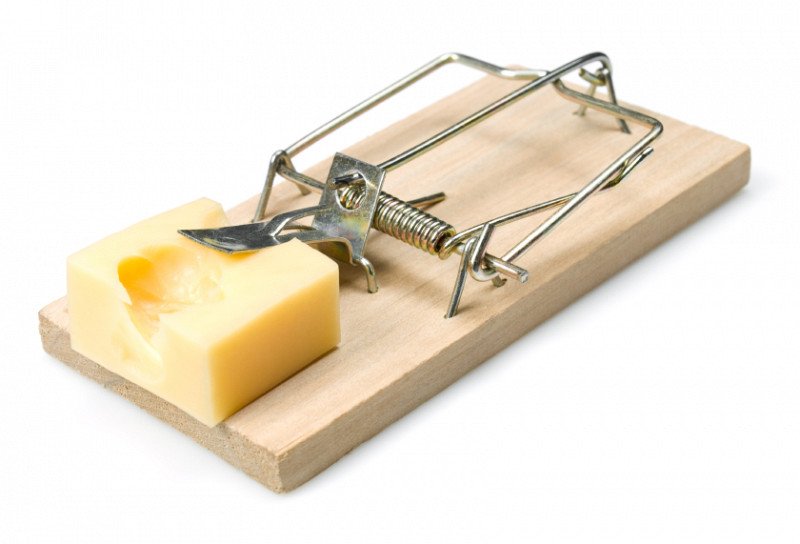
The main thing when installing a mousetrap is not to damage yourself. This is especially true for spring devices, where the mechanism can suddenly close.
Basic precautions:
- Do not place your fingers under the raised frame.
- Do not set traps in places that are accessible to children and Pets.
To prevent the mechanism from rusting, periodically lubricate it with oil.
A mousetrap is an effective method of getting rid of rodents. The most modern and convenient – electronic traps. They quickly kill the animal without annoying squeaking and blood. If you feel sorry for the rodent, use cages or swings. After the capture of the mouse to release it away from the house.
